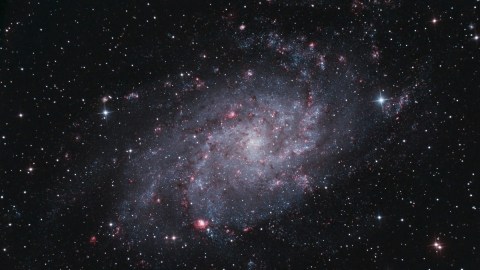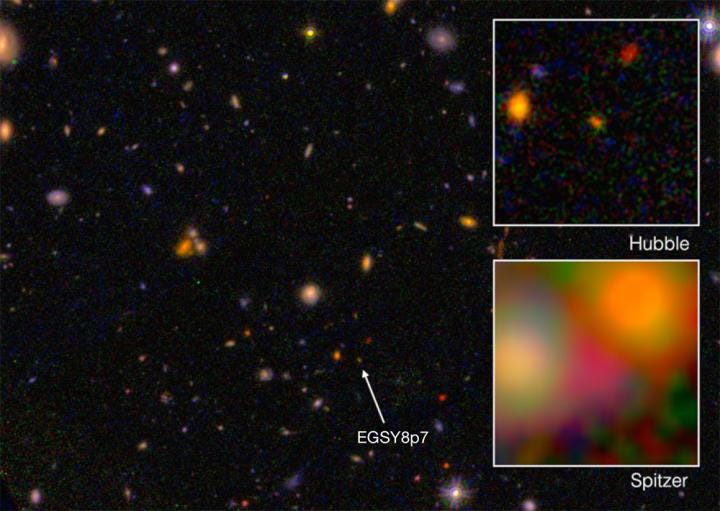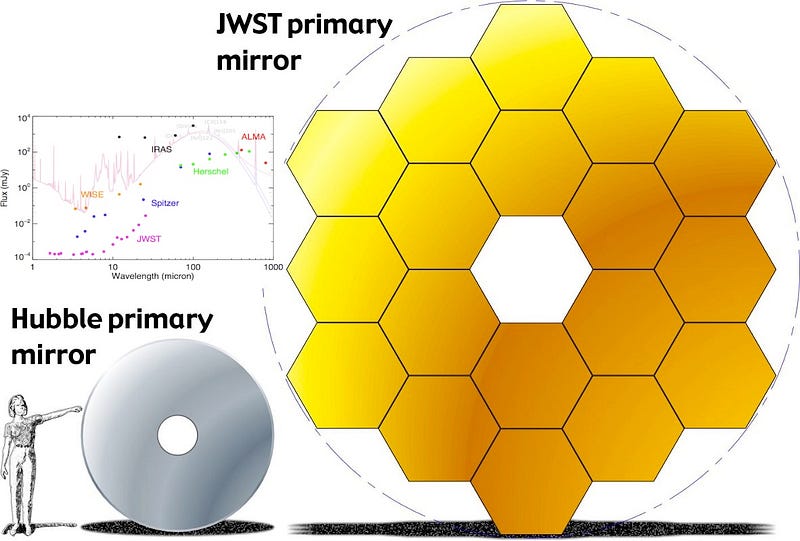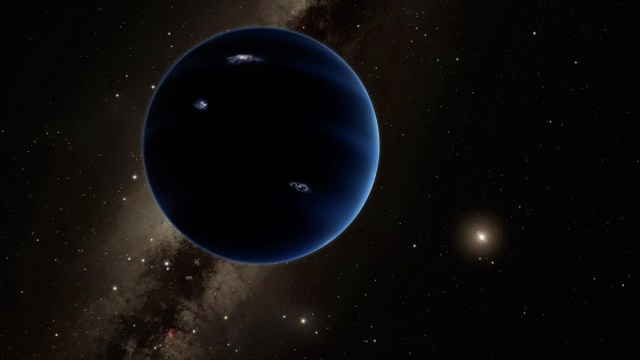How far is the Universe’s most distant galaxy?

And how close does the farthest one we’ve ever found so far come to it?
“Science, however, gives me the feeling of steady progress: I am convinced that theoretical physics is actual philosophy. It has revolutionized fundamental concepts, e.g., about space and time (relativity), about causality (quantum theory), and about substance and matter (atomistics), and it has taught us new methods of thinking (complementarity) which are applicable far beyond physics.” –Max Born
The Universe is an awfully big place. When we look out at the night sky, almost everything visible to the naked eye is a part of our own galaxy, like a star, star cluster or nebula, with very few exceptions. Yet some of these exceptions — like the Triangulum Galaxy, above — can be seen through the stars of our own Milky Way, poking out from the darkness. These “island Universes” are found throughout the Universe everywhere we look, even in the darkest, emptiest patches of space, if only we’re willing to collect enough light to look deep enough.

Most of these galaxies are so distant that even at the speed of light, it takes many millions or even billions of years for a single photon to make the journey across intergalactic space, where it was last emitted from the surface of a star, and finally arrive at our eyes. While 186,282 miles per second (or 299,792,458 meters per second) might seem like a tremendously fast speed, the fact that we’ve only had 13.8 billion years since the Big Bang means that the distance that light could have traveled and still reach us is finite.
You might also think this means that the most distant galaxy must therefore be no more than 13.8 billion light years away from us, but that would be a mistake. You see, in addition to traveling at a finite speed through the Universe, light is also subject to a less intuitive scientific fact: the fact that the fabric of the Universe itself is expanding over time.
The solutions to General Relativity that even admitted this possibility were only uncovered in the 1920s, but the observations that came later — showing that as a galaxy’s distance increased, so did its cosmological redshift from our point of view — allowed us to not only confirm that the Universe was expanding, but to eventually measure the rate of expansion and how it changed over time. What it means is that the galaxies, as we see them today, are actually more distant than they were when the light reaching us now was first emitted.

It’s analogous to being in an airport at the edge of a moving walkway, with someone on the walkway being moved away from you. If they were to roll a ball towards you at 9 miles per hour (4 meters per second) when they started out just 8 meters away from you, you’d expect it to take two seconds to reach you. But if the walkway moved at 4.5 miles per hour (2 meters per second) away from you, it would take twice as long.
What’s less intuitive is that, in the expanding Universe, it’s taking longer notbecause the ball (or the light, in the Universe’s case) is moving slower; it’s not! The ball is still rolling at 4 meters per second and the light is still traveling at the speed of light. But the fabric that the ball (or light) travels through is creating more space in between you and it, and so the ball has a greater distance to roll, and the light has a greater distance to travel. Moreover, when it finally arrives, the original emitting galaxy will now be even farther away than it was when the light was first emitted, and will be farther away than even a physics-defying signal could travel instantaneously.

The galaxy EGS8p7 is the current record holder for the most distant galaxy known. With a measured redshift of 8.63, our reconstruction of the Universe tells us it took that light a remarkable 13.24 billion years to travel to us. Doing the math more accurately, we find that we’re seeing this object from when the Universe was just 573 million years old, or only 4% of its current age.
But because the Universe has been expanding all this time, this galaxy isn’t just 13.24 billion light years away; it’s actually more like 30.35 billion light years distant. And don’t be fooled: that means that if you could instantaneously send a signal from this galaxy to us, it would cover a distance of 30.35 billion light years. If instead you tried to send a photon from this galaxy to our eyes today, it would — thanks to dark energy and the expanding fabric of space — never actually reach us. That galaxy is gone for good. In fact, the only reason we can see it at all with our current telescopes like Hubble and Keck is because the light-blocking neutral gas in the direction of this galaxy is particularly sparse!

Don’t be fooled into thinking that this galaxy is either the farthest one in existence or the farthest one we’ll ever see. We’re seeing the easiest galaxies at this distance that our equipment and the Universe allows us to see: the ones that have the least neutral, light-blocking gas, the ones that are the biggest and brightest, and the ones that our instruments are sensitive to. A few years in the future, the James Webb Space Telescope will likely see back much farther than this, as it can probe to longer wavelengths (and hence, higher redshifts), can look for light that isn’t blocked by neutral gas, and can see much fainter galaxies than our current telescopes (like Hubble, Spitzer and Keck) can see today.

In theory, the earliest galaxies should come into existence at a redshift of 15-to-20, with perhaps a scant few forming even earlier. For reference, here’s what a galaxy’s redshift, light-travel-time, formation time after the big bang, and distance from us today would look like:

Notice how much difference in distance just a little time makes at this scale: 0.04 billion years in time can mean over a billion extra light years in distance! The earliest galaxy out there is yet to be discovered, and yet the farthest one we know of is already over 30 billion light years away. The earliest galaxies of all are out there, just waiting for us to explore them, and in our own way, to better understand our own past.
Leave your comments on our forum, and check out our first book: Beyond The Galaxy, available now, as well as our reward-rich Patreon campaign!





